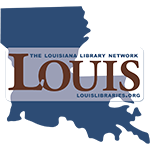General Biology I (Science Majors)
Topic outline
-
Welcome to CBIO 1033 General Biology I (Science Majors)!
Course Introduction:This course covers fundamental principles that govern the characteristics of living organisms. To explain these principles, presented topics will include: The study of life, Chemical foundations of life, Biological molecules, Cell Structure, Structure and function of plasma membranes, Metabolism, Cellular Respiration, Photosynthesis, Cell reproduction, Meiosis and sexual reproduction, Mendel’s Experiments and heredity, Modern understandings of inheritance, DNA structure and function, genes and protein, and Ethics and societal responsibility. By the end of the course, students will be able to demonstrate an understanding of biological concepts that involve chemical and physical laws.
Upon successful completion of this course,
- The student will be able to explain and apply the scientific method.
- The student will be able to utilize the concepts of biochemistry, and cell biology.
- The student will explain cellular metabolism by comparing and contrasting photosynthesis and respiration.
- The student will compare and contrast mitosis and meiosis as well as demonstrate the importance of inheritance.
- The student will describe molecular biology (DNA replication and protein synthesis).
Adopting institution should provide learners information on how to navigate the course. Consider adding an introductory navigation video. Text description could include, for example:Navigating the Course
This course is set up in Modules covering various topics which may be accessed from the course navigation menu on the left or by scrolling below. Modules may be collapsed in the menu and it the body of the course to minimize scrolling. Each module includes the relevant chapters followed by various activities, which may include discussion forums, listening activities and quizzes, practice quizzes, module tests, and other relevant activities as appropriate for each module. Many items are required and may be marked as completed automatically when the activity has been submitted (the broken check box), but others will marked as done by the student (the solid check box).Please move through the items below and continue through the Learner Support and Getting Started modules before moving on to Module 1. Be sure to check for announcements and due dates to stay on track. This course and its contents are licensed under a Creative Commons Attribution 4.0 International License by LOUIS: The Louisiana Library Network, except where otherwise noted.
This course and its contents are licensed under a Creative Commons Attribution 4.0 International License by LOUIS: The Louisiana Library Network, except where otherwise noted. - The student will be able to explain and apply the scientific method.
-
This module contains all the items you should review and complete before you begin Module 1. Before moving on, be sure to:
- Check the News and Announcements Forum
- Read the Course Syllabus
- Introduce yourself to the class
- Read the instructions for the Q & A Forum
Good luck in the course!-
Use this forum to tell us a little about yourself and your interests. Some topic ideas:
- What is your field of study/research interest or concentration?
- What are you most interested in learning about in this class and why?
- Have you ever taken an online class before?
- Any other information you would like to share with your classmates, such as special interests or activities.
Post a picture! We look forward to meeting you.
-
Use this forum to ask your instructor any questions you have about the course. You may post at any time, and your instructor will respond here. Be as specific as possible.
Please keep in mind that others can see your posts, so do not post any personal information. If you have questions about your grade, please email your instructor directly. You can expect a response to posts and emails within [X] hours. [Recommendation is 24 hours M-F, next business day on weekends.]
Subscription should be set to Auto.
- Check the News and Announcements Forum
-
Use the information in this module to customize the template to your needs. This module is currently hidden from students, and available for you to refer to throughout the semester.
-
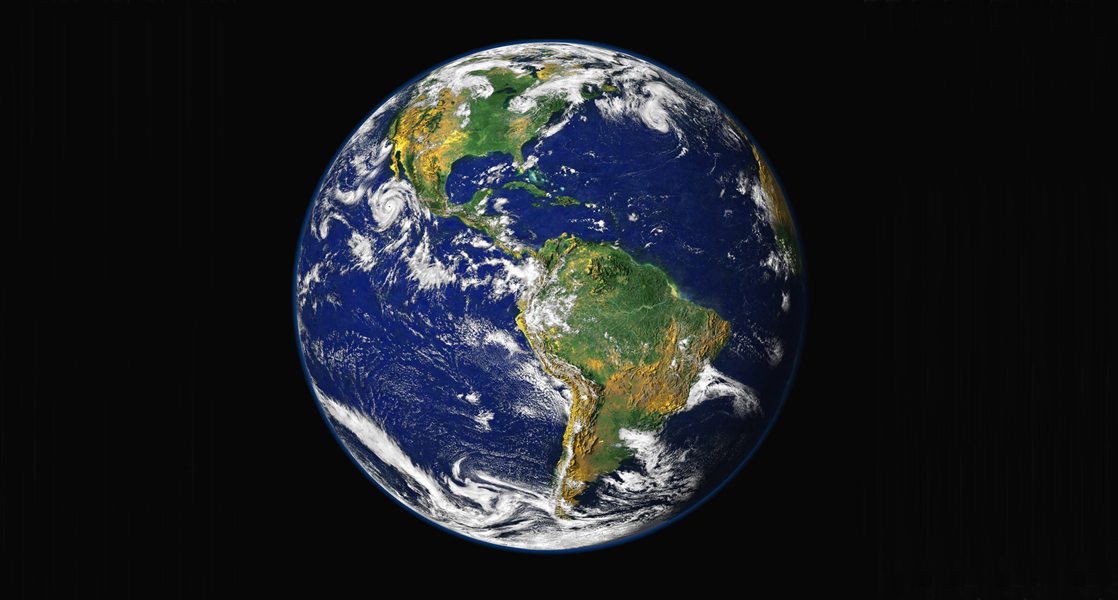
This chapter will discuss natural sciences and explore the principles of biology through the scientific method, inductive and deductive reasoning and basic versus applied science. You will also learn the shared properties of living organisms and their organization. Lastly, different subdisciplines of biology will be introduced so that you may connect them to your everyday life.
Image from Biology 2e from OpenStax, licensed under Creative Commons Attribution License v4.0 with the image credit NASA/GSFC/NOAA/USGS.
Upon completion of this module, you will be able to:- Identify the shared characteristics of the natural sciences (Course Outcome #2)
- Summarize the steps of the scientific method (Course Outcome #1)
- Compare inductive reasoning with deductive reasoning (Course Outcome #1)
- Describe the goals of basic science and applied science (Course Outcome #1)
- Identify and describe the properties of life (Course Outcome #2, 3, 4 & 5)
- Describe the levels of organization among living things (Course Outcome #2)
- Recognize and interpret a phylogenetic tree (Course Outcome #2)
- List examples of different subdisciplines in biology (Course Outcome #1)
To achieve these objectives:
- Read the Module 1 Introduction
- Read and view the materials in the Module 1 Pressbooks book, embedded below by section for the chapter titled The Study of Life
- Complete the assignment and discussion forum post and response
This module's lab activity is included as well, to occur in the lab class. Slides are available to accompany the class lecture.
Note the check boxes to the right that help you track your progress: some are automatic, and some are manual.
Module Pressbooks Resources and Activities
You will find the following resources and activities in this module at the Pressbooks website. Click on the links below to access or complete each item.
- Identify the shared characteristics of the natural sciences (Course Outcome #2)
-
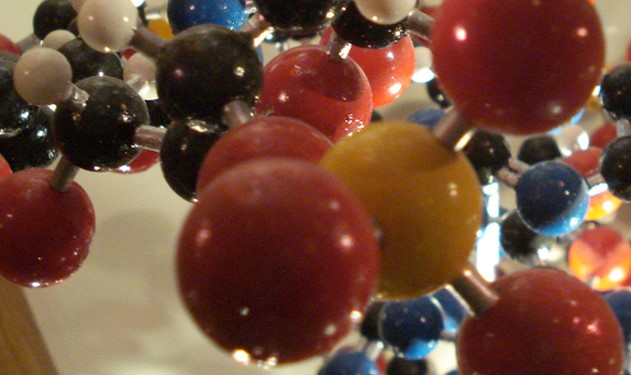
All living organisms are composed of combinations of atoms. Some of the most abundant atomic elements in living organisms include carbon, hydrogen, nitrogen, oxygen, sulfur, and phosphorus. These are the building blocks of the nucleic acids, proteins, carbohydrates, and lipids that are the fundamental components of living matter. These are combined to form cells, tissues, organ systems, and entire organisms. Because atoms obey the natural laws that govern all energy and matter, the fundamentals of physics and chemistry are important for gaining insight into biological processes.
Image from Biology 2e from OpenStax, licensed under Creative Commons Attribution License v4.0 with the image credit modification of work by Christian Guthier.
Upon completion of this module, you will be able to:- Define matter and elements (Course Outcome # 2)
- Describe the interrelationship between protons, neutrons, and electrons (Course Outcome # 2)
- Compare the ways in which electrons can be donated or shared between atoms (Course Outcome # 2)
- Explain the ways in which naturally occurring elements combine to create molecules, cells, tissues, organ systems, and organisms (Course Outcome # 2)
- Describe the properties of water that are critical to maintaining life (Course Outcome # 2)
- Explain why water is an excellent solvent (Course Outcome # 2)
- Provide examples of water’s cohesive and adhesive properties (Course Outcome # 2)
- Discuss the role of acids, bases, and buffers in homeostasis (Course Outcome # 2)
- Explain why carbon is important for life (Course Outcome # 2)
- Describe the role of functional groups in biological molecules (Course Outcome # 2, #5)
To achieve these objectives:
- Read the Module 2 Introduction
- Read and view the materials in the Module 2 Pressbooks book, embedded below by section for the chapter titled The Chemical Foundation of Life
- Complete the assignment and discussion forum post and response.
This module's lab activity is included as well, to occur in the lab class. Slides are available to accompany the class lecture.
Module Pressbooks Resources and Activities
You will find the following resources and activities in this module at the Pressbooks website. Click on the links below to access or complete each item.
- Define matter and elements (Course Outcome # 2)
-
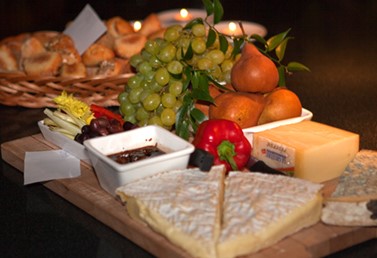
Living organisms must acquire or manufacture nutrients to survive. Many of these critical nutrients are biological macromolecules, or large molecules, necessary for life. Different smaller organic molecule (monomer) combinations build these macromolecules (polymers). What specific biological macromolecules do living things require? How do these molecules form? What functions do they serve? We explore these questions in this module.
Image from Biology 2e from OpenStax, licensed under Creative Commons Attribution License v4.0 with the image credit: modification of work by Bengt Nyman.
Upon completion of this module, you will be able to:- Understand macromolecule synthesis (Course Outcome # 2, #5)
- Explain dehydration (or condensation) and hydrolysis reactions (Course Outcome # 2, #5)
- Discuss the role of carbohydrates in cells and in the extracellular materials of animals and plants (Course Outcome # 2)
- Explain carbohydrate classifications (Course Outcome # 2)
- List common monosaccharides, disaccharides, and polysaccharides (Course Outcome # 2)
- Describe the four major types of lipids (Course Outcome # 2)
- Explain the role of fats in storing energy (Course Outcome # 2)
- Differentiate between saturated and unsaturated fatty acids (Course Outcome # 2)
- Describe phospholipids and their role in cells (Course Outcome # 2)
- Define the basic structure of a steroid and some steroid functions (Course Outcome # 2)
- Explain how cholesterol helps maintain the plasma membrane's fluid nature (Course Outcome # 2)
- Describe the functions proteins perform in the cell and in tissues (Course Outcome # 2, #5)
- Discuss the relationship between amino acids and proteins (Course Outcome # 2, #5)
- Explain the four levels of protein organization (Course Outcome # 2, #5)
- Describe the ways in which protein shape and function are linked (Course Outcome # 2, #5)
- Describe nucleic acids' structure and define the two types of nucleic acids (Course Outcome # 2, #5)
- Explain DNA's structure and role (Course Outcome # 2, #5)
- Explain RNA's structure and roles (Course Outcome # 2, #5)
- Read the Module 3 Introduction
- Read and view the materials in the Module 3 Pressbooks book, embedded below by section for the chapter titled Biological Macromolecules.
- Complete the assignment and discussion forum post and response.
This module's lab activity is included as well, to occur in the lab class. Slides are available to accompany the class lecture.Module Pressbooks Resources and Activities
You will find the following resources and activities in this module at the Pressbooks website. Click on the links below to access or complete each item.
- Understand macromolecule synthesis (Course Outcome # 2, #5)
-
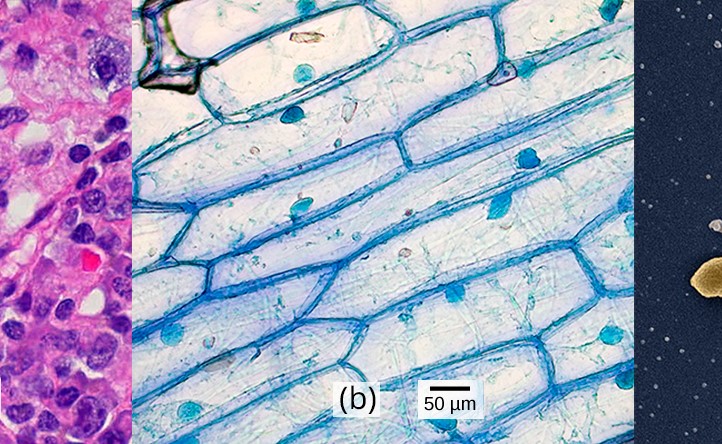 This module explores the cellular level of the biological hierarchy of organization, which builds on what you have learned about how atoms interact to form molecules, and the important biological macromolecules that compose living systems. We will learn about the technology that is used to study cells, the basic types of cells and their defining features and the structure and functions of subcellular structures, or organelles. This module 's chapter concludes with the ways cells are linked together to form the next level of organization: collections of cells called tissues.
This module explores the cellular level of the biological hierarchy of organization, which builds on what you have learned about how atoms interact to form molecules, and the important biological macromolecules that compose living systems. We will learn about the technology that is used to study cells, the basic types of cells and their defining features and the structure and functions of subcellular structures, or organelles. This module 's chapter concludes with the ways cells are linked together to form the next level of organization: collections of cells called tissues. The cell is the fundamental and most basic unit of life; it is the simplest level of organization that is capable of maintaining the processes necessary for maintaining life. Whether a biologist is studying the anatomy and physiology of unicellular or multicellular organisms, or the chemical process that occur at the cellular level, or more complex concepts, such as ecology and evolution, knowledge of the cell is an essential component.
Image from Biology 2e from OpenStax, licensed under Creative Commons Attribution License v4.0 with the image credit: modification of work by Ed Uthman, MD; modification of work by Umberto Salvagnin; modification of work by Anthony D'Onofrio, William H. Fowle, Eric J. Stewart, and Kim Lewis of the Lewis Lab at Northeastern University; scale-bar data from Matt Russell.
Upon completion of this module, you will be able to:- Summarize cell theory (Course Outcome #2)
- Compare and contrast prokaryotic and eukaryotic cells, and animal and plant cells, and name examples of each (Course Outcome #2)
- Summarize the structure and functions of the major cell structures and organelles, including the endomembrane system, the cytoskeleton and external structures (Course Outcome #2)
- Explain how cells can function with each other through the extracellular matrix and cell connections (Course Outcome #2)
- Read the Module 4 Introduction
- Read and view the materials in the Module 4 Pressbooks book, embedded below by section for the chapter titled Cell Structure.
- Complete the assignment and discussion forum post and response
This module's lab activity is included as well, to occur in the lab class. Slides are available to accompany the class lecture.
Module Pressbooks Resources and Activities
You will find the following resources and activities in this module at the Pressbooks website. Click on the links below to access or complete each item.
- Summarize cell theory (Course Outcome #2)
-

In this module, we learn that the purpose of the cell membrane, also known as the plasma membrane, is to maintain the integrity of the cell's interior by selectively allowing substances enter into the cell while keeping others out. The outer surfaces of cell membranes are hydrophilic, whereas the interior layer is hydrophobic. This characteristic enables the membrane to function as a possible filter for the movement of various compounds in solution. In many animal cells, the cell membrane functions as a basis of attachment for the cytoskeleton, whereas in others, it serves as a foundation of attachment for the cell wall.
Image from Biology 2e from OpenStax, licensed under Creative Commons Attribution License v4.0 with the image credit: modification of work by Randy Le’Moine
Upon completion of this module, you will be able to:- Understand the cell membrane fluid mosaic model (Course Outcome #2)
- Describe phospholipid, protein, and carbohydrate functions in membranes (Course Outcome #2)
- Discuss membrane fluidity (Course Outcome #2)
- Explain why and how passive transport occurs (Course Outcome #2)
- Understand the osmosis and diffusion processes (Course Outcome #2)
- Define tonicity and its relevance to passive transport (Course Outcome #2)
- Understand how electrochemical gradients affect ions (Course Outcome #2)
- Distinguish between primary active transport and secondary active transport (Course Outcome #2)
- Describe endocytosis, including phagocytosis, and receptor-mediated endocytosis (Course Outcome #2)
To achieve these objectives:
- Read the Module 5 Introduction
- Read and view the materials in the Module 5 Pressbooks book, embedded below by section for the chapter titled Structure and Function of Plasma Membranes.
- Complete the assignment and discussion forum post and response
This module's lab activity is included as well, to occur in the lab class. Slides are available to accompany the class lecture.
Module Pressbooks Resources and Activities
You will find the following resources and activities in this module at the Pressbooks website. Click on the links below to access or complete each item.
- Understand the cell membrane fluid mosaic model (Course Outcome #2)
-
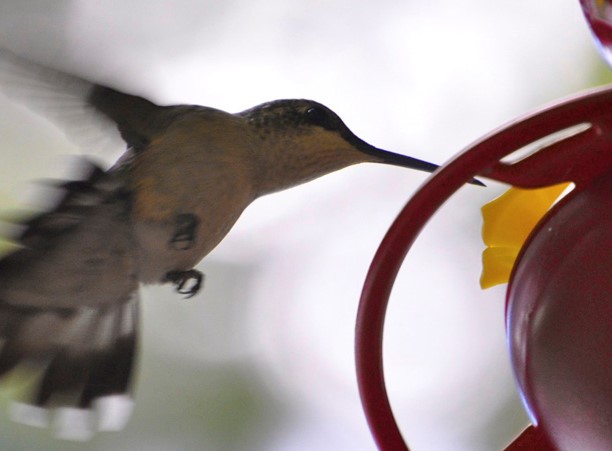
Energy changes in living organisms are governed by two laws of thermodynamics. According to the laws of thermodynamics, the metabolism of an organism transforms matter and energy. Energy is essential to all metabolic activities. Metabolic pathways start with a single molecule, which is subsequently changed in a sequence of stages to produce a specific product. Catabolic pathways generate energy that can be saved and subsequently used to promote anabolic pathways. This module explores these concepts.
Image from Biology 2e from OpenStax, licensed under Creative Commons Attribution License v4.0 with the image credit: modification of work by Cory Zanker.Upon completion of this module, you will be able to:- Explain metabolic pathways and describe the two major types (Course Outcome #3)
- Discuss how chemical reactions play a role in energy transfer (Course Outcome #3)
- Define “energy” (Course Outcome #3)
- Explain the difference between kinetic and potential energy (Course Outcome #3)
- Discuss the concepts of free energy and activation energy (Course Outcome #3)
- Describe endergonic and exergonic reactions (Course Outcome #3)
- Discuss the concept of entropy (Course Outcome #3)
- Explain the first and second laws of thermodynamics (Course Outcome #3)
- Explain ATP’s role as the cellular energy currency (Course Outcome #3)
- Describe how energy releases energy through ATP hydrolysis (Course Outcome #3)
- Describe the role of enzymes in metabolic pathways (Course Outcome #3)
- Explain how enzymes function as molecular catalysts (Course Outcome #3)
- Discuss enzyme regulation by various factors (Course Outcome #3)
To achieve these objectives:
- Read the Module 6 Introduction
- Read and view the materials in the Module 6 Pressbooks book, embedded below by section for the chapter titled Metabolism.
- Complete the assignment and discussion forum post and response.
This module's lab activity is included as well, to occur in the lab class. Slides are available to accompany the class lecture.
Module Pressbooks Resources and Activities
You will find the following resources and activities in this module at the Pressbooks website. Click on the links below to access or complete each item.
- Explain metabolic pathways and describe the two major types (Course Outcome #3)
-

All cells require a constant supply of energy to do the work of life. Cells must carry out the tasks of building, moving, and maintaining order — and these tasks require energy. Cells use the hydrolysis (splitting) of ATP to drive almost all of the processes that require an input of energy. But how do cells replenish their supply of ATP? In this chapter, you will learn that cells use metabolic pathways that can efficiently transform the energy stored in the bonds of fuel molecules from the food we eat into energy stored in the bonds of ATP. In this chapter, we will see how the enzyme pathways of glycolysis, the oxidation of pyruvate and the citric acid cycle make it possible for cells to capture the energy released when chemical bonds of fuel molecules are broken. We will see that the cell will use this energy to drive the electron transport chain and the ATP synthase complex in the mitochondria to rebuild the cell’s supply of ATP molecules.
Image from Biology 2e from OpenStax, licensed under Creative Commons Attribution License v4.0 with the image credit: modification of work by the U.S. Department of Defense.
Upon completion of this module, you will be able to:
- Discuss the importance of electrons in the transfer of energy in living systems (C.O. 5)
- Explain how cells use ATP as an energy source. (C.O. 5)
- Identify the net result of the chemical breakdown of glucose by glycolysis in terms of molecules produced. (C.O. 5)
- Compare the energy input and output of glycolysis in terms of the numbers of ATP used and produced. (C.O. 5)
- Explain how a circular pathway, such as the citric acid cycle, fundamentally differs from a linear biochemical pathway, such as glycolysis. (C.O. 5)
- Identify the steps and products of the oxidation of pyruvate to acetyl CoA. (C.O. 5)
- Describe how electrons move through the electron transport chain and explain what happens to their energy levels during this process.
- Explain how a proton (H+) gradient is established and maintained by the electron transport chain. (C.O. 5)
- Explain how the flow of hydrogen protons through the ATP synthase complex drives the synthesis of ATP molecules in chemiosmosis. (C.O. 5)
- Discuss the fundamental difference between anaerobic cellular respiration and fermentation. (C.O. 5)
- Identify the type of fermentation that occurs in animal cells and the conditions that initiate that fermentation. (C.O. 5)
- Discuss the ways in which carbohydrate metabolic pathways, glycolysis, and the citric acid cycle interrelate with protein and lipid metabolic pathways. (C.O. 5)
- Explain why metabolic pathways are considered to be open systems. (C.O. 5)
- Describe how feedback inhibition would affect the production of an intermediate or product in a pathway. (C.O. 5)
- Identify the mechanism that controls the rate of the transport of electrons through the electron transport chain. (C.O. 5)
To achieve these objectives:
- Read the Module 7 Introduction
- Read and view the materials in the Module 7 Pressbooks book, embedded below by section for the chapter titled Cellular Respiration
- Complete the assignment and discussion forum post and response
This module's lab activity is included as well, to occur in the lab class. Slides are available to accompany the class lecture.
Module Pressbooks Resources and Activities
You will find the following resources and activities in this module at the Pressbooks website. Click on the links below to access or complete each item.
- Discuss the importance of electrons in the transfer of energy in living systems (C.O. 5)
-
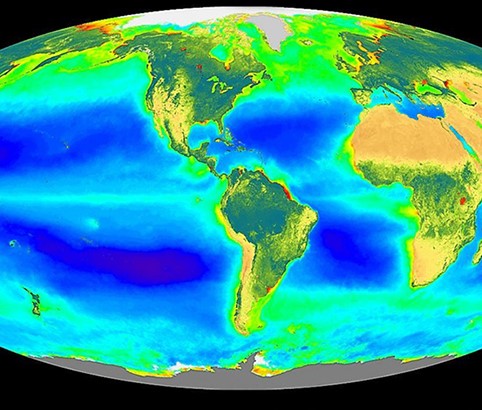 Module 8 explores Photosynthesis, the most essential and vital process for the evolution of terrestrial life on earth. Living organisms that evolved to breathe oxygen and gain energy through cellular respiration can only do so as a result of the production of oxygen that is a byproduct of the process of photosynthesis. Without plants there would be no oxygen and no form of energy for many living organisms from butterflies and bumble bees, to hares, horses, and humans. Plants are producers and the basis of foodwebs. Photosynthesis happens deep inside of plants in the chloroplasts of the plant cells. Through absorption of energy from sunlight in combination with carbon dioxide and water, plants produce much needed energy in the form of the carbohydrate molecule glucose and a byproduct of this reaction is six molecules of oxygen. Aren't we so very fortunate for the photosynthesis of plants? In this chapter we will learn about the light dependent and light independent reactions involved in photosynthesis. The structures and chemicals involved in the synthesis of carbohydrates. We will explore the electromagnetic spectrum of light and gain a better understanding of how plants absorb this radiant energy and convert it to chemical energy. Plants provide so much beauty and abundance in our natural world. Plants provide flowers for nectar feeding insects and once these flowers are pollinated they produce food in the form of fruits and vegetables for us animals to eat. Natural plant products provide the largest percentage of chemical compounds for the development chemicals used in medicine. Without plants and photosynthesis we would have less than half of the drugs that were developed between 1981-2002. The future of humankind is dependent upon plants and the process of photosynthesis.[Source of plant medicine: Rendy Kartika (Internet Archive version)]
Module 8 explores Photosynthesis, the most essential and vital process for the evolution of terrestrial life on earth. Living organisms that evolved to breathe oxygen and gain energy through cellular respiration can only do so as a result of the production of oxygen that is a byproduct of the process of photosynthesis. Without plants there would be no oxygen and no form of energy for many living organisms from butterflies and bumble bees, to hares, horses, and humans. Plants are producers and the basis of foodwebs. Photosynthesis happens deep inside of plants in the chloroplasts of the plant cells. Through absorption of energy from sunlight in combination with carbon dioxide and water, plants produce much needed energy in the form of the carbohydrate molecule glucose and a byproduct of this reaction is six molecules of oxygen. Aren't we so very fortunate for the photosynthesis of plants? In this chapter we will learn about the light dependent and light independent reactions involved in photosynthesis. The structures and chemicals involved in the synthesis of carbohydrates. We will explore the electromagnetic spectrum of light and gain a better understanding of how plants absorb this radiant energy and convert it to chemical energy. Plants provide so much beauty and abundance in our natural world. Plants provide flowers for nectar feeding insects and once these flowers are pollinated they produce food in the form of fruits and vegetables for us animals to eat. Natural plant products provide the largest percentage of chemical compounds for the development chemicals used in medicine. Without plants and photosynthesis we would have less than half of the drugs that were developed between 1981-2002. The future of humankind is dependent upon plants and the process of photosynthesis.[Source of plant medicine: Rendy Kartika (Internet Archive version)]Image from Biology 2e from OpenStax, licensed under Creative Commons Attribution License v4.0 with the image credit: modification of work by SeaWiFS Project, NASA/Goddard Space Flight Center and ORBIMAGE
Upon completion of this module, you will be able to:- Explain the significance of photosynthesis to other living organisms (Course Outcome #2, #3)
- Describe the main cellular structures involved in photosynthesis (Course Outcome #2, #3)
- Explain the chemical process and identify the substrates and products of photosynthesis (Course Outcome #2, #3)
- Explain how plants absorb energy from sunlight. Identify the cellular structures involved in the light dependent processes of photosynthesis. (Course Outcome #2, #3)
- Describe short and long wavelengths of light (Course Outcome #2, #3)
- Describe how and where photosynthesis takes place within a plant and what pigments are involved (Course Outcome #2, #3)
- Describe the Calvin cycle (Course Outcome #2, #3)
- Define carbon fixation (Course Outcome #2, #3)
- Explain how photosynthesis works in the energy cycle of all living organisms (Course Outcome #2, #3)
To achieve these objectives:
- Read the Module 8 Introduction
- Read and view the materials in the Module 8 Pressbooks book, embedded below by section for the chapter titled Photosynthesis.
- Complete the assignment and discussion forum post and response.
This module's lab activity is the Lab Practical 1, to occur in the lab class [a Plant Transpiration lab is also available below as an alternative]. Slides are available to accompany the class lecture.
Module Pressbooks Resources and Activities
You will find the following resources and activities in this module at the Pressbooks website. Click on the links below to access or complete each item.
- Explain the significance of photosynthesis to other living organisms (Course Outcome #2, #3)
-
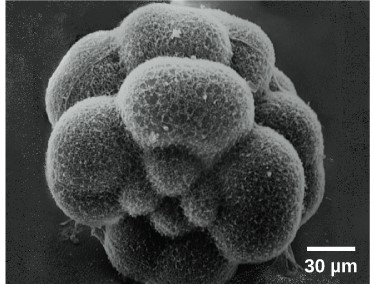 Cell Reproduction is fundamental to a student's understanding of the biological origins of life as opposed to inanimate things like for example a piece of rock. The fact that living things start as small and eventually become big or a few individuals and become many individuals rest on certain intrinsic properties which are exclusively attributable to life or living as opposed to dead or nonliving matter. The life of a cell or the cell cycle, has an integral part which is the process of cell division to ensure its own production of two daughter cells, each of which then starts all over again. Cell division in multicellular eukaryotes provides the ability to develop from a fertilized single cell. Dividing cells continuously make new red blood cells in the bone marrow. Our unique ability and capacity to procreate or start as simple cells, develop and become complex organisms and maintain our structure by renewal and repair through replacing dead and dying cells within the big complex organism, ourselves and also our individuality are programmed biological functions which have a cellular basis. There is a tendency to conclude that cells are basic units of life. Therefore, cells are simple without considering their vast capacities to transform into the very wide varieties of lifeforms in our biosphere: The beginning of life and the continuity of life is based on the reproduction of cells, plant cells will remain plant cells and animal cells will remain animal cells; eukaryotic cells share certain common features but these do not make them the same, as plant cells will divide into plant cells to become the plant organism and animal cells will divide into animal cells to become the animal organism; prokaryotic or bacterial cells and unicellular eukaryotes like Amoeba which are complete units of life as individual cells undergo their division to produce new cells which are actually new organisms and thus, reproduce to continue life by cell division. Our understanding of the molecular system that regulates the eukaryotic cell cycle including division, controls and malfunction enables us to understand how normal (healthy) cells progress, cancer arises and the development of appropriate remedies.
Cell Reproduction is fundamental to a student's understanding of the biological origins of life as opposed to inanimate things like for example a piece of rock. The fact that living things start as small and eventually become big or a few individuals and become many individuals rest on certain intrinsic properties which are exclusively attributable to life or living as opposed to dead or nonliving matter. The life of a cell or the cell cycle, has an integral part which is the process of cell division to ensure its own production of two daughter cells, each of which then starts all over again. Cell division in multicellular eukaryotes provides the ability to develop from a fertilized single cell. Dividing cells continuously make new red blood cells in the bone marrow. Our unique ability and capacity to procreate or start as simple cells, develop and become complex organisms and maintain our structure by renewal and repair through replacing dead and dying cells within the big complex organism, ourselves and also our individuality are programmed biological functions which have a cellular basis. There is a tendency to conclude that cells are basic units of life. Therefore, cells are simple without considering their vast capacities to transform into the very wide varieties of lifeforms in our biosphere: The beginning of life and the continuity of life is based on the reproduction of cells, plant cells will remain plant cells and animal cells will remain animal cells; eukaryotic cells share certain common features but these do not make them the same, as plant cells will divide into plant cells to become the plant organism and animal cells will divide into animal cells to become the animal organism; prokaryotic or bacterial cells and unicellular eukaryotes like Amoeba which are complete units of life as individual cells undergo their division to produce new cells which are actually new organisms and thus, reproduce to continue life by cell division. Our understanding of the molecular system that regulates the eukaryotic cell cycle including division, controls and malfunction enables us to understand how normal (healthy) cells progress, cancer arises and the development of appropriate remedies.Image from Biology 2e from OpenStax, licensed under Creative Commons Attribution License v4.0 with the image credit: modification of work by Evelyn Spiegel, Louisa Howard; scale-bar data from Matt Russell.
Upon completion of this module, you will be able to:- Distinguish between chromosomes, genes, and traits (Course Outcome #4)
- Describe the mechanisms of chromosome compaction (Course Outcome #4 & #5)
- Describe the three stages of interphase (Course Outcome #4)
- Discuss the behavior of chromosomes during karyokinesis/mitosis (Course Outcome #4)
- Explain how the cytoplasmic content is divided during cytokinesis (Course Outcome #4)
- Understand how the cell cycle is controlled by mechanisms that are both internal and external to the cell (Course Outcome #2, #4 & #5)
- Explain how the three internal “control checkpoints” occur at the end of G1, at the G2/M transition, and during metaphase (Course Outcome #2, #4 & #5)
- Describe the molecules that control the cell cycle through positive and negative regulation (Course Outcome #2, #4 & #5)
- Describe how cancer is caused by uncontrolled cell growth (Course Outcome #2, #4 & #5)
- Understand how proto-oncogenes are normal cell genes that, when mutated, become oncogenes (Course Outcome #2, #4 & #5)
- Describe how tumor suppressors function (Course Outcome #2, #4 & #5)
- Explain how mutant tumor suppressors cause cancer (Course Outcome #2, #4 & #5)
To achieve these objectives:
- Read the Module 9 Introduction
- Read and view the materials in the Module 9 Pressbooks book, embedded below by section for the chapter titled Cell Reproduction.
- Complete the assignment and discussion forum post and response.
This module's lab activity is included as well, to occur in the lab class. Slides are available to accompany the class lecture.
Module Pressbooks Resources and Activities
You will find the following resources and activities in this module at the Pressbooks website. Click on the links below to access or complete each item.
- Distinguish between chromosomes, genes, and traits (Course Outcome #4)
-
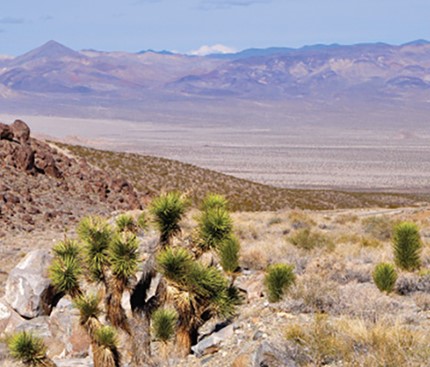 Meiosis and sexual reproduction provide our understanding of how the molecular system is itself generated in replica and transforms all the time. Generally, there is varying resemblance among related individuals. Thus, offspring tend to resemble their parents rather than unrelated individuals within the population. We have come to understand the genotype (molecular nature) as it relates to the phenotype (physical nature) and how this ordered relatedness is maintained from one generation to the next generation and so on in a process of transmission of molecular properties in biological form referred to as traits. These traits are transmitted from parents to offspring such that the traits can show up as similar or as varied features. Hence, traits are described as hereditary and the fact that they are inherited provide an ordered pathway of how life functions and the biological mechanisms that are embodied in molecular packets called genes. In sexually reproducing organisms, meiosis is a special cell division that is unlike mitosis in several respects, as each parent produce cells which contain typically half of their original chromosome and it is the fusion of these half chromosome content or haploid cells (sperm and egg) that yield the zygote or diploid fertilized egg or cell with the restored original chromosome content that maintains a species' complete chromosome set during their sexual life cycle.
Meiosis and sexual reproduction provide our understanding of how the molecular system is itself generated in replica and transforms all the time. Generally, there is varying resemblance among related individuals. Thus, offspring tend to resemble their parents rather than unrelated individuals within the population. We have come to understand the genotype (molecular nature) as it relates to the phenotype (physical nature) and how this ordered relatedness is maintained from one generation to the next generation and so on in a process of transmission of molecular properties in biological form referred to as traits. These traits are transmitted from parents to offspring such that the traits can show up as similar or as varied features. Hence, traits are described as hereditary and the fact that they are inherited provide an ordered pathway of how life functions and the biological mechanisms that are embodied in molecular packets called genes. In sexually reproducing organisms, meiosis is a special cell division that is unlike mitosis in several respects, as each parent produce cells which contain typically half of their original chromosome and it is the fusion of these half chromosome content or haploid cells (sperm and egg) that yield the zygote or diploid fertilized egg or cell with the restored original chromosome content that maintains a species' complete chromosome set during their sexual life cycle.Image from Biology 2e from OpenStax, licensed under Creative Commons Attribution License v4.0 with the image credit: modification of work by Ken Cole, USGS.
Upon completion of this module, you will be able to:- Describe the behavior of chromosomes during meiosis, and the differences between the first and second meiotic divisions (Course Outcome #4)
- Describe the cellular events that take place during meiosis (Course Outcome #2 & #4)
- Explain the differences between meiosis and mitosis (Course Outcome #4)
- Explain the mechanisms within the meiotic process that produce genetic variation among the haploid gamete (Course Outcome #4)
- Explain that meiosis and sexual reproduction are highly evolved traits (Course Outcome #4)
- Identify variation among offspring as a potential evolutionary advantage of sexual reproduction (Course Outcome #4)
- Describe the three different life-cycle types among sexually reproducing multicellular organisms. (Course Outcome #2, #4 & #5)
To achieve these objectives:
- Read the Module 10 Introduction
- Read and view the materials in the Module 10 Pressbooks book, embedded below by section for the chapter titled Meiosis and Sexual Reproduction.
- Complete the assignment and discussion forum post and response.
This module's lab activity is included as well, to occur in the lab class. Slides are available to accompany the class lecture.
Module Pressbooks Resources and Activities
You will find the following resources and activities in this module at the Pressbooks website. Click on the links below to access or complete each item.
- Describe the behavior of chromosomes during meiosis, and the differences between the first and second meiotic divisions (Course Outcome #4)
-
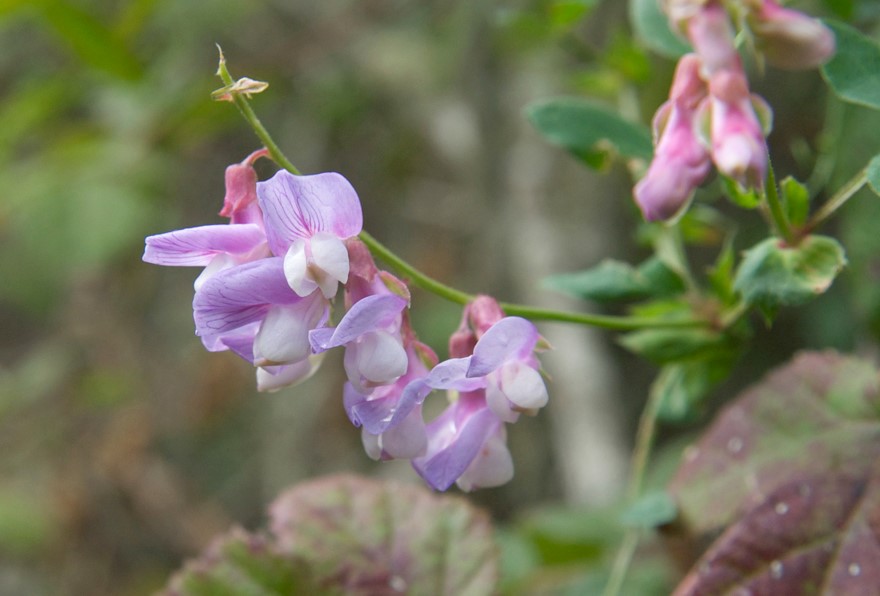
This module explores Mendel's experiments and the laws of probability.
Image from Biology 2e from OpenStax, licensed under Creative Commons Attribution License v4.0 with the image credit: modification of work by Jerry Kirkhart
Upon completion of this module, you will be able to:- Describe the scientific reasons for the success of Mendel’s experimental work (Course Outcome #1, 4)
- Describe the expected outcomes of monohybrid crosses involving dominant and recessive alleles (Course Outcome #1, 4)
- Apply the sum and product rules to calculate probabilities (Course Outcome #1)
- Explain the relationship between genotypes and phenotypes in dominant and recessive gene systems (Course Outcome #1, 4)
- Develop a Punnett square to calculate the expected proportions of genotypes and phenotypes in a monohybrid cross (Course Outcome #1, 4)
- Explain the purpose and methods of a test cross (Course Outcome #1, 4)
- Identify non-Mendelian inheritance patterns such as incomplete dominance, codominance, recessive lethals, multiple alleles, and sex linkage (Course Outcome #1, 4)
- Explain Mendel’s law of segregation and independent assortment in terms of genetics and the events of meiosis (Course Outcome #1, 4)
- Use the forked-line method and the probability rules to calculate the probability of genotypes and phenotypes from multiple gene crosses (Course Outcome #1, 4)
- Explain the effect of linkage and recombination on gamete genotypes (Course Outcome #1, 4)
- Explain the phenotypic outcomes of epistatic effects between genes (Course Outcome #1, 4)
To achieve these objectives:
- Read the Module 11 Introduction
- Read and view the materials in the Module 11 Pressbooks book, embedded below by section for the chapter titled Mendel's Experiments and Heredity
- Complete the assignment and discussion forum post and response.
This module's lab activity is included as well, to occur in the lab class. Slides are available to accompany the class lecture.
Module Pressbooks Resources and Activities
You will find the following resources and activities in this module at the Pressbooks website. Click on the links below to access or complete each item.
- Describe the scientific reasons for the success of Mendel’s experimental work (Course Outcome #1, 4)
-
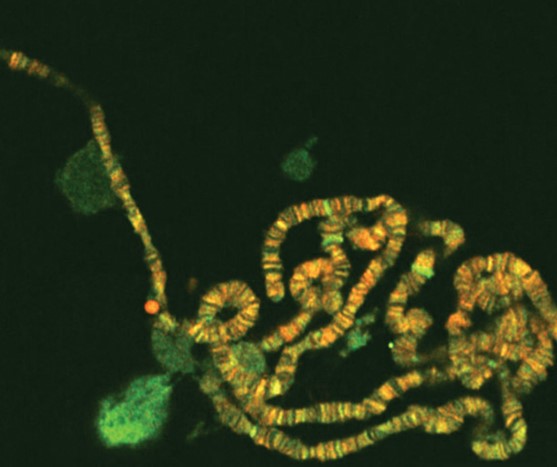
Now that you understand meiosis, you have the fundamentals necessary to discuss Sutton's Chromosomal Theory of Inheritance and genetic linkage. By understanding genetic linkage and a new concept that is introduced, crossing over, we will then explore genetic disorders, some of which you may be familiar with. This chapter will also present a karyotype to give you a visual understanding of chromosomes and the concepts introduced.
Image from Biology 2e from OpenStax, licensed under Creative Commons Attribution License v4.0 with the image credit: modification of work by “LPLT”/Wikimedia Commons; scale-bar data from Matt RussellUpon completion of this module, you will be able to:- Discuss Sutton’s Chromosomal Theory of Inheritance (Course Outcome #4)
- Describe genetic linkage (Course Outcome #4)
- Explain the process of homologous recombination, or crossing over (Course Outcome #4)
- Describe how a karyogram is created (Course Outcome #4)
- Explain how nondisjunction leads to disorders in chromosome number (Course Outcome #4)
- Compare disorders that aneuploidy causes (Course Outcome #4)
- Describe how errors in chromosome structure occur through inversions and translocations (Course Outcome #4)
To achieve these objectives:
- Read the Module 12 Introduction
- Read and view the materials in the Module 12 Pressbooks book, embedded below by section for the chapter titled Modern Understandings of Inheritance
- Complete the assignment and discussion forum post and response.
This module's lab activity is included as well, to occur in the lab class. Slides are available to accompany the class lecture.
Module Pressbooks Resources and Activities
You will find the following resources and activities in this module at the Pressbooks website. Click on the links below to access or complete each item.
- Discuss Sutton’s Chromosomal Theory of Inheritance (Course Outcome #4)
-
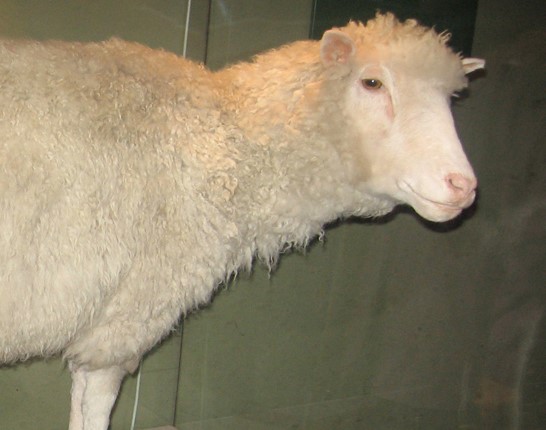 DNA is known as deoxyribonucleic acid. Humans and other organisms contain their genetic information in the form of DNA, and it is usually present in the nuclei of the cells. DNA is responsible for encoding the information that organisms use to reproduce, grow, and develop. The genetic blueprint of an organism is carried out by the DNA, which helps to pass genes from one generation to another. Accepting DNA as genetic material was very challenging and difficult for the biologist in the 1940s. It was believed by some biologists that protein is the genetic material of a cell; some biologists believed that RNA is the genetic material, but some biologists predicted DNA as genetic material. X-ray diffraction was the first technique that examined that the structure of the DNA involves two long polypeptide chains. After the results from this technique, Watson and Crick proposed the 3-D model of the DNA. The ability of the DNA to store hereditary material was revealed after getting information about its structure.Image from Biology 2e from OpenStax, licensed under Creative Commons Attribution License v4.0 with no additional image credit.Upon completion of this module, you will be able to:
DNA is known as deoxyribonucleic acid. Humans and other organisms contain their genetic information in the form of DNA, and it is usually present in the nuclei of the cells. DNA is responsible for encoding the information that organisms use to reproduce, grow, and develop. The genetic blueprint of an organism is carried out by the DNA, which helps to pass genes from one generation to another. Accepting DNA as genetic material was very challenging and difficult for the biologist in the 1940s. It was believed by some biologists that protein is the genetic material of a cell; some biologists believed that RNA is the genetic material, but some biologists predicted DNA as genetic material. X-ray diffraction was the first technique that examined that the structure of the DNA involves two long polypeptide chains. After the results from this technique, Watson and Crick proposed the 3-D model of the DNA. The ability of the DNA to store hereditary material was revealed after getting information about its structure.Image from Biology 2e from OpenStax, licensed under Creative Commons Attribution License v4.0 with no additional image credit.Upon completion of this module, you will be able to:- Explain transformation of DNA (Course Outcome #5)
- State and explain Chargaff’s rules (Course Outcome #5)
- Describe the structure of DNA (Course Outcome #5)
- Explain the Sanger method of DNA sequencing (Course Outcome #5)
- Discuss the similarities and differences between eukaryotic and prokaryotic DNA (Course Outcome #5)
- Explain how the structure of DNA reveals the replication process (Course Outcome #5)
- Describe the Meselson and Stahl experiments (Course Outcome #5)
- Explain the process of DNA replication in prokaryotes (Course Outcome #5)
- Discuss the role of different enzymes and proteins in supporting this process (Course Outcome #5)
- Discuss the similarities and differences between DNA replication in eukaryotes and prokaryotes (Course Outcome #5)
- State the role of telomerase in DNA replication (Course Outcome #5)
- Discuss the different types of mutations in DNA (Course Outcome #5)
- Explain DNA repair mechanisms (Course Outcome #5)
To achieve these objectives:
- Read the Module 13 Introduction
- Read and view the materials in the Module 13 Pressbooks book, embedded below by section for the chapter titled DNA Structure and Function
- Complete the assignment and discussion forum post and response.
This module's lab activity is included as well, to occur in the lab class. [a Strawberry DNA lab is also available below as an alternative]. Slides are available to accompany the class lecture.
Module Pressbooks Resources and Activities
You will find the following resources and activities in this module at the Pressbooks website. Click on the links below to access or complete each item.
- Explain transformation of DNA (Course Outcome #5)
-
 This module's chapter is focused on “protein structure and function” because protein structure heavily influences its function. The structure of a protein is caused by the chemical properties of its amino acids, which is coded by a DNA sequence (a gene). Genes are functional units of heredity as they are made of DNA. The chromosome is made of DNA containing many genes. Every gene comprises of the particular set of instructions for a particular function or protein-coding. Speaking in usual terms, genes are responsible for heredity.
This module's chapter is focused on “protein structure and function” because protein structure heavily influences its function. The structure of a protein is caused by the chemical properties of its amino acids, which is coded by a DNA sequence (a gene). Genes are functional units of heredity as they are made of DNA. The chromosome is made of DNA containing many genes. Every gene comprises of the particular set of instructions for a particular function or protein-coding. Speaking in usual terms, genes are responsible for heredity.Image from Biology 2e from OpenStax, licensed under Creative Commons Attribution License v4.0 with the image credit: “interleukin-2”: Ramin Herati/Created from PDB 1M47 and rendered with Pymol
Upon completion of this module, you will be able to:- Explain the “central dogma” of DNA-protein synthesis (Course Outcome #5)
- Describe the genetic code and how the nucleotide sequence prescribes the amino acid and the protein sequence (Course Outcome #5)
- List the different steps in prokaryotic transcription (Course Outcome #5)
- Discuss the role of promoters in prokaryotic transcription (Course Outcome #5)
- Describe how and when transcription is terminated (Course Outcome #5)
- List the steps in eukaryotic transcription (Course Outcome #5)
- Discuss the role of RNA polymerases in transcription (Course Outcome #5)
- Compare and contrast the three RNA polymerases (Course Outcome #5)
- Explain the significance of transcription factors (Course Outcome #5)
- Describe the different steps in RNA processing (Course Outcome #5)
- Understand the significance of exons, introns, and splicing for mRNAs (Course Outcome #5)
- Explain how tRNAs and rRNAs are processed (Course Outcome #5)
- Describe the different steps in protein synthesis (Course Outcome #5)
- Discuss the role of ribosomes in protein synthesis (Course Outcome #5)
To achieve these objectives:
- Read the Module 14 Introduction
- Read and view the materials in the Module 14 Pressbooks book, embedded below by section for the chapter titled Genes and Proteins
- Complete the assignment and discussion forum post and response.
This module's lab activity is included as well, to occur in the lab class. Slides are available to accompany the class lecture.
Module Pressbooks Resources and Activities
You will find the following resources and activities in this module at the Pressbooks website. Click on the links below to access or complete each item.
- Explain the “central dogma” of DNA-protein synthesis (Course Outcome #5)
-
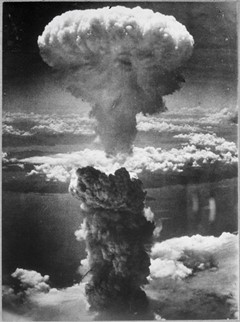 This module explores the questions of the role of ethics in science, the role of responsibility of science for society, and the responsibility society has in science. Upon completion of this module, you will be able to:
This module explores the questions of the role of ethics in science, the role of responsibility of science for society, and the responsibility society has in science. Upon completion of this module, you will be able to:- Recall or identify cases in the sciences of physics, medicine, genetics, or forensics that raised ethical questions (Course Outcome #1, 2, 4)
- Discuss how science can contribute to innovation in society in general, or to the diagnosis or treatment of diseases given specific examples cases (Course Outcome #1, 2, 4)
- Debate the role of responsibility of science for society given the specific examples and guiding questions in this chapter (Course Outcome #1)
- Debate the responsibility society has in science given the specific examples and guiding questions in this chapter (Course Outcome #1)
To achieve these objectives:
- Read the Module 15 Introduction
- Read and view the materials in the Module 15 Pressbooks book, embedded below by section.
- Complete the assignment and discussion forum post and response.
This module's lab activity is the Lab Practical Final Exam, to occur in the lab class.Module Pressbooks Resources and Activities
You will find the following resources and activities in this module at the Pressbooks website. Click on the links below to access or complete each item.
- Recall or identify cases in the sciences of physics, medicine, genetics, or forensics that raised ethical questions (Course Outcome #1, 2, 4)
